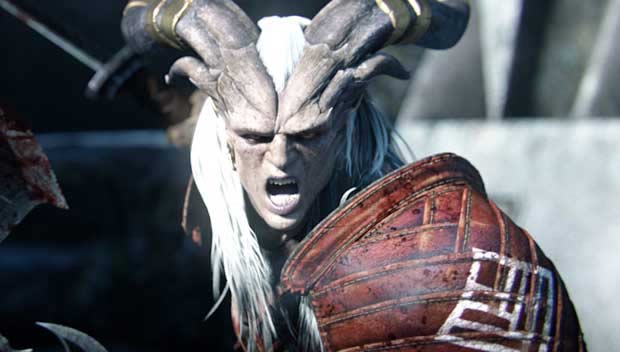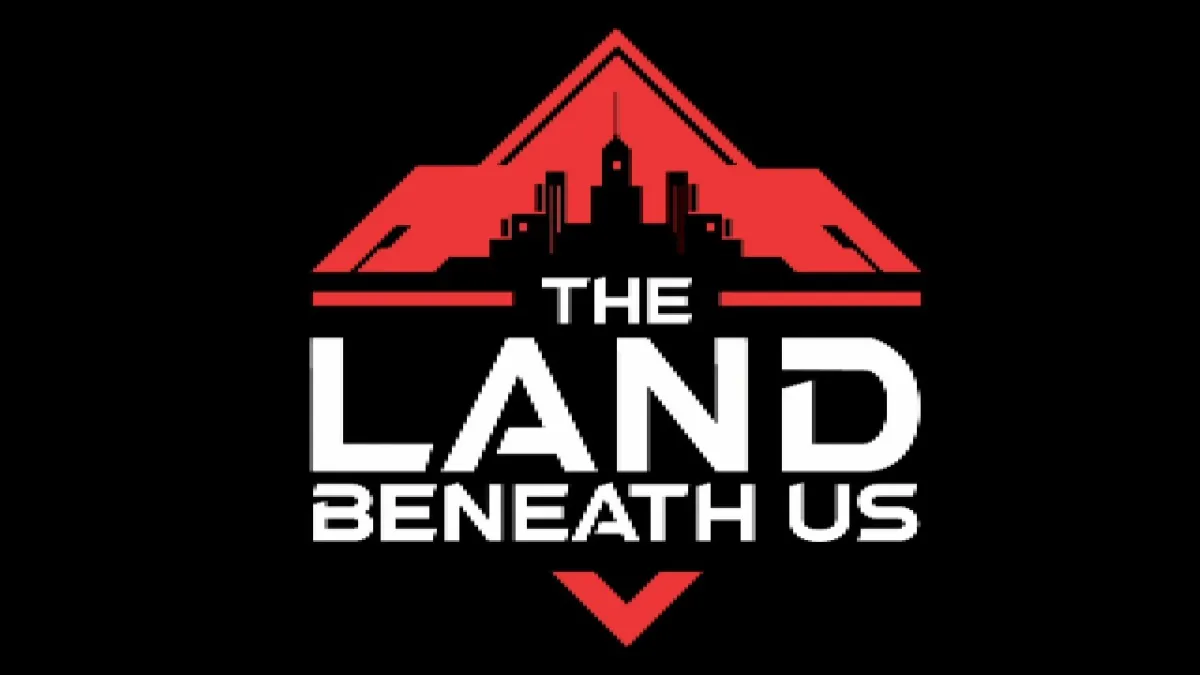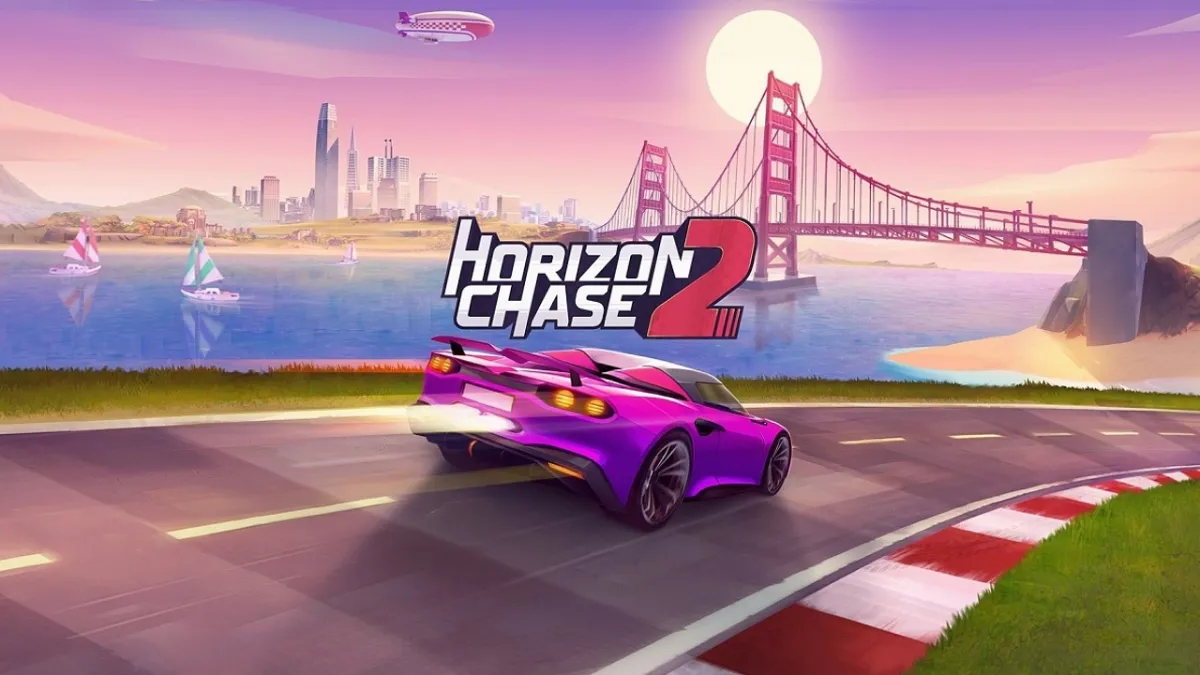Dragon Age II is a single player role-playing game (RPG) for play on the Xbox 360. Epic sequel to the BioWare developed 2009 Game of the Year, Dragon Age: Origins, Dragon Age II continues the adventure with a new hero, Hawke, and utilizes the choices made by the player to affect a story that spans ten years worth of time in-game.
Dragon Age II utilizes a nonlinear narrative, taking the form of a story-within-a-story that hinges upon your exploits as told by the storyteller, Varick. Yet like any good storyteller, Varick tends to exaggerate from time to time. When questioned on events related to Hawke, Varick may present a different scenario in which Hawke’s exploits play out. It is within these replays that the decisions of the players hold sway, as their particular versions of Hawke relive these events. Is the player’s particular version of Hawke, male or female? A warrior, a rogue, or a mage? Is Hawke good-natured or something less than a salt-of-the-Earth type? Is romance in the air amongst characters he/she associates with? These choices are all the player’s to make and each affect the the outcome of the story at all levels. – EA
Bioware has got to be one of the best developers in the business that takes criticisms and turns them into brilliant games. Like it did when transitioning from Mass Effect to Mass Effect 2, Bioware has done it again in Dragon Age II. The developers have managed to take the finer points of Dragon Age: Origins tune them to near perfection and then remedy nearly every glaring fault of the first game, depending on your point of view on Dragon Age: Origins. The first game earned high marks from many critics, and on the PC ended with a metascore in the 90’s.
Flash forward a couple of years and we’ve got Dragon Age: 2. And like I said, has improved upon much of that already well developed base. The story is one that immediately draws you in to the world. Not only because of it’s well written fantasy lore, but by the way the story is told. Something new for the developer is telling the story of Hawke, within another over arching plot line in the Dragon Age lore. Much like Dragon Age: Origins you’ll meet characters along your quest that you will earn trust and friendship. You’ll be able to select your party before going on adventures, either playing favorites, or sometimes incorporating the necessary characters for a plot line to progress. Customization, Dragon Age II has it. And it plays a big role in the combat sequences of the game, which is excellent. Somehow, Dragon Age II takes the strategic elements of turn based strategy RPG’s and blends it perfectly with Action RPG. What you get is a very rewarding combat mechanic in Dragon Age II. Characters are broken into Warrior, Rogue, and Mage classes. But that’s just the very tip of the iceberg when it comes to customization. After selecting which type of character you are going to use, you will want to align yourself with party members that can work well with your character.
You can customize each character in you party’s abilities, and depending on what class they are these may vary. There are standard abilities for each class, as well as unlockable abilities that can be used when you have reached a level with the character as a friend or a rival. Once unlocking these abilities they can be assigned for use during combat in a couple of ways. The first, you can assign them for manual execution. And since you can thumb through any of your characters while battling by pressing the bumper button, you can pause the action, switch to a character, and execute a special move and then click back to another character. This dynamic makes the game extremely deep and much more strategic than the fast paced action may lead on. The second, is through a setting called characters tactics. Here you can specify conditions and for which conditions to use specific attacks. For example: If Self Health<50% you can set the non player controlled character to heal himself under those conditions. Saying that doesn’t work however, and you can just heal them by using your actions wheel doing it manually while in battle.
The result of these customizations and options available to a party lead to fights that in may instances need to be orchestrated carefully for the best chance of survival, especially in the later goings of the game. Mages will need to focus on ranged and support attacks while monitoring other characters health and livelihood. While tanks or warriors will be in the mix duking it out in a more personal manner. It’s all in real-time and with some practice becomes quite rewarding to pass a particularly difficult foe, and equally so when laying down the law against a less equipped group of enemies. It’s truly one of the most dynamic, robust, and well done combat mechanics in any RPG that I’ve ever played.
Most character interactions and alliances are developed through carefully tailored conversation trees. Where you will earn or lose friendship for selecting specific actions in the tree. One thing that has long been a problem with RPG’s like Mass Effect 2, or Dragon Age Origins, is the uncertainty of the outcome of a conversation. Clicking a response simply because it sounded good, could lead to unexpected results when it came to your party alliances. In Dragon Age II, Bioware has incorporated a contextual conversation graphic that will show you exactly what the result of your reply will be. In some instances it may be money, it may incite anger, or a laugh, but you’ll know before you click the button by the icons next to the reply.
Dragon Age II has been streamlined to near perfection. Alongside the deep combat system and wealth of gameplay options, there’s really alot to accomplish in Dragon Age II. If you opt to deviate from the straight lined affair of the Main Plot Line, there are a ton of side-quests to do. These side-quests really bring a much more personal touch to the game, and tells the backstory quite well. Through pages and pages of believable dialogue you get a brutally clear picture of the state of affairs in Dragon Age II. Though sometimes you may skip some, just to get back on the track of unraveling the story behind the main quest line.
Travelling between areas in the game is quite simple. Labeled by black arrows on the map, exiting an area will prompt you with a map that shows you active quests. Some have to do with the main story, some, the side story. By toggling through the map you can easily click the area you would like to travel to and then after a loading screen you are there. You are now ready to start working on the quest that you have selected, and in some cases there are more than one quest associated with a given area. As pieces of a quest-line are completed the map is updated to show you where the next portion of the quest is located.
You may travel back and forth between different areas to complete all of the quests associated with a broader area. Some places are inaccessible until you get through certain parts of a quest. This stream lining really takes a lot of the guess work out of the game, as far as what you are supposed to be doing to advance the plot line. If you take to your journal, which is accessible through main menu, you can see what quests need to be completed for the main and sub plot lines. Depending on your level of involvement you can choose what to accomplish as you see fit.
A game with as many options, and the level of depth of Dragon Age II, is more than enough for some fans of this genre. In many cases graphics and general presentation can take a backseat to the stellar gameplay. Fortunately in Dragon Age II, this is top notch as well. The world is exceptional to look at whether you are in one of the many dungeons, caverns, castles, or other locales of the game. There is certainly a classic dungeon feel to some of the areas and for classic fantasy RPG fans it’s a treat. It’s not over the top on eye candy, but nice nonetheless, and accompanied by exceptional sounds from the environment, enemies, and party. In a game that does most of it conveying of the story through spoken word of characters, it’s done in traditional Bioware fashion. Well. The characters aren’t quite to the level of Mass Effect 2 as far as the voice acting goes, but get the job done. The music sets an eery tone when traversing through unknown locales, and reaches a nice pitch when a fight does ensue.
Aside from the customizable character abilities that I mentioned above, there’s alot of other customizable options for your party members and yourself in Dragon Age II. As you progress in leveling your character, you will need to spend points leveling core disciplines like, health, stamina, magic resistance, crit hit, etc. You will also pick up amulets, rings, clothes, armor, and weapons that will add modifiers to your overall score. One thing I particularly liked was that given the level of management required with your party, you are constantly reminded that it’s time to level up characters, and even if you haven’t used a particular character for some time he earns experience as your active party members do. So, if you hadn’t played with a party member for some time and needed to use them for a quest, you could do so and would have plenty of XP to spend accordingly.
With all of the streamlining in Dragon Age II one core element of RPG’s has been cast aside, Exploration. You are limited to a set number of paths you can choose in a given area. Want to hike up a hill to get a better view? It’s not possible. Whether on specific quests or not, there are predetermined paths that you must travel and there’s not too much deviation from that. It’s not a game breaker, once you realize that this isn’t every other RPG you’ve ever played, but if you are a fan of more open world RPG’s you might feel a little caged-in in Dragon Age II.
For all of the praise that the combat controls in Dragon Age II are likely to recieve, I found things to get a bit muddled when it came to trying to do too much. It’s very important to use the tactics feature so that some actions your characters will do on their own. In some cases it takes a couple of seconds to switch between players and it can cause some unneeded damage in a contested battle. Because of this, many battles are approached with a “lets see if we can mash through them approach” which is not making any alterations, dying, then retrying once you know exactly what you’re facing.
There’s no doubt that Bioware has created a beautiful game in Dragon Age 2. The sights and sounds of it all are quite amazing, but the areas do tend to feel a bit empty. Full towns only have a handful of NPC’s roaming about, and because of the lack of characters and general details to some of the areas, there tends to be a feeling of emptiness or generics. It would have been nice to see towns or areas with living, breathing atmospheres with people carrying about their day to day activities. Now the game makes up for it the actual story behind the characters that you do meet. It doesn’t help that as you land at Kirkwall at the onset of the game, you are told there is no room in the city for refugees, then once inside it feels empty.
Other things that irk me about RPG’s of this nature are the incorporation of so much needless loot. The loot drops are quite frequent in Dragon Age II, but none of them really hold any significant value and it’s really unnecessary to carry a full stash of good back to a vendor to sell them. I ended up destroying most loot just to make room for more things that I would eventually destroy. Of course some of the items can be used to upgrade your characters, as well as craft other goods, but it was never something that was mandatory to find success in the game.
In a game as massive as Dragon Age II the inevitable problem of loading screens pops up. Often. So much so in fact, that it gets pretty annoying in many circumstances. Since the game is not open world and broken down into many smaller areas, traveling from one area to the next requires a loading screen. Going to an area within an area requires a loading screen. There are quite a few instances where the actual load takes longer than the time you need to spend in the area, and therefore are spending double that on entry and exit. The streamlining comes with a price, and I would love to see figures on how many loading screens an average playthrough of Dragon Age II has. It has got to be high in comparison to other games.
Loading screens aren’t the only fault I really despised about Dragon Age II, there are also quite a few occurrences where you will be travelling with your party and a member of your team will just run-off after enemies that you may not have seen. Like the Budweiser commercials you’ll hear him/her shout “here we go” then just dive into the combat by himself. It’s a LeeRoy Jenkins moment that happens alot. Often times leaving you scurrying to find where they went before they are dead.
Dragon Age II isn’t a perfect game, but it is an exceptional game. Much like they did with the transition between Mass Effect 1& 2, in blurring the line between third person shooter and RPG, Bioware hit the sweet spot with Dragon Age 2 in blurring the line between Third Person Action and Strategic RPG. With fine tuned gameplay mechanics, a pitch perfect story, littered with likeable characters and well written dialogue, Dragon Age 2 is one of the best RPG’s I have played in quite some time. If you are fan of fantasy, RPG’s, or just well crafted video games, you’d do well to pick this one up at first chance.









Published: Mar 8, 2011 08:00 am